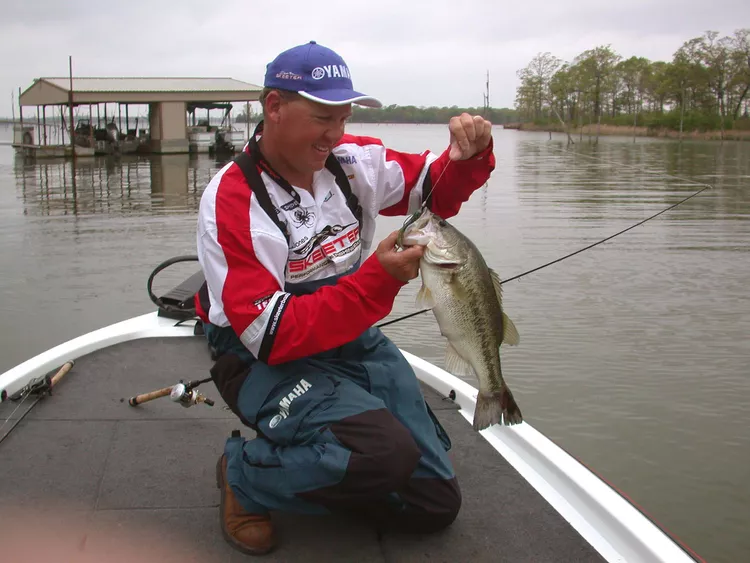Summary
The so-called “trick” worm is a straight soft-plastic worm that measures 6 to 7 inches long. Unlike traditional worms, it does not possess a tail designed for swimming action. It comes in natural-appearing colors, but is also often seen in bright hues like bubblegum pink, yellow, white, and chartreuse. Originating from a specific brand name for a type of lure, the term “trick worm” is now widely used for similar products across various manufacturers. This type of worm is effective in catching largemouth bass in lakes and ponds, particularly during the post-spawn season.
Rigging Trick Worm
To rig a trick worm, it is typically done without a weight, allowing it to be fished similarly to a floating topwater lure. Start by tying a 2/0 offset worm hook directly to your fishing line, or alternatively, you could attach a small barrel swivel approximately 6 inches above the hook to prevent line twisting. If your line is prone to twisting, a barrel swivel is advisable. While a non-offset hook is an option, it requires a toothpick piece to be inserted through the hook eye to stop it from sliding down the line. The sharpness of the hook is crucial; most anglers prefer a very sharp offset hook for better performance.
An important aspect of rigging is the choice of line visibility. Some anglers opt for a highly visible line when using trick worms; others favor a less visible line, even if it makes detecting strikes more difficult. Ultimately, the choice comes down to personal preference and the angler’s confidence, as well as their eyesight health. A line with a strength of 10 to 17-pound-test works well, although lighter lines are preferable in clearer waters. Conversely, using a heavier line is beneficial for securing a solid hookset. This rigging can be accomplished with either spinning or baitcasting tackle. If utilizing spinning gear, it can effectively skip the worm under docks or through overhanging trees and brush.
Retrieving Techniques
When retrieved by twitching, a trick worm exhibits a jumping motion similar to that of a walking plug, almost in a “walking-the-dog” style. It can be fished in various methods, but one of the most effective techniques involves twitching it just beneath the surface, followed by a pause to allow the worm to sink.
On occasions, bass may rise to hit the worm on the surface, making the strikes visible. At other times, the worm will simply disappear when a fish sucks it in. Bright colors are particularly advantageous in these situations, as they provide an indication of a fish strike in relatively clear waters. Frequently, when the worm sinks out of view, the only clue you may receive about a hit is when the line jumps or starts to move unexpectedly. If you feel the fish taking the worm, there’s a chance it may feel you too, resulting in a missed hookset.
An Older Version of Lure Setup
This lure setup is reminiscent of a method known as a swivel worm. In this configuration, the worm is tied 18 inches behind a barrel swivel, with the hook inserted so it twists as you retrieve it beneath the surface. The barrel swivel was crucial for combating the twisting actions of the lure. While it was effective, casting accurately was often challenging, although it shares some fishing similarities with the trick worm, emphasizing that the trick worm does not spin. Bass can strike at a trick worm even when they are reluctant to bite on other baits, making it a valuable option to consider during certain fishing conditions.





